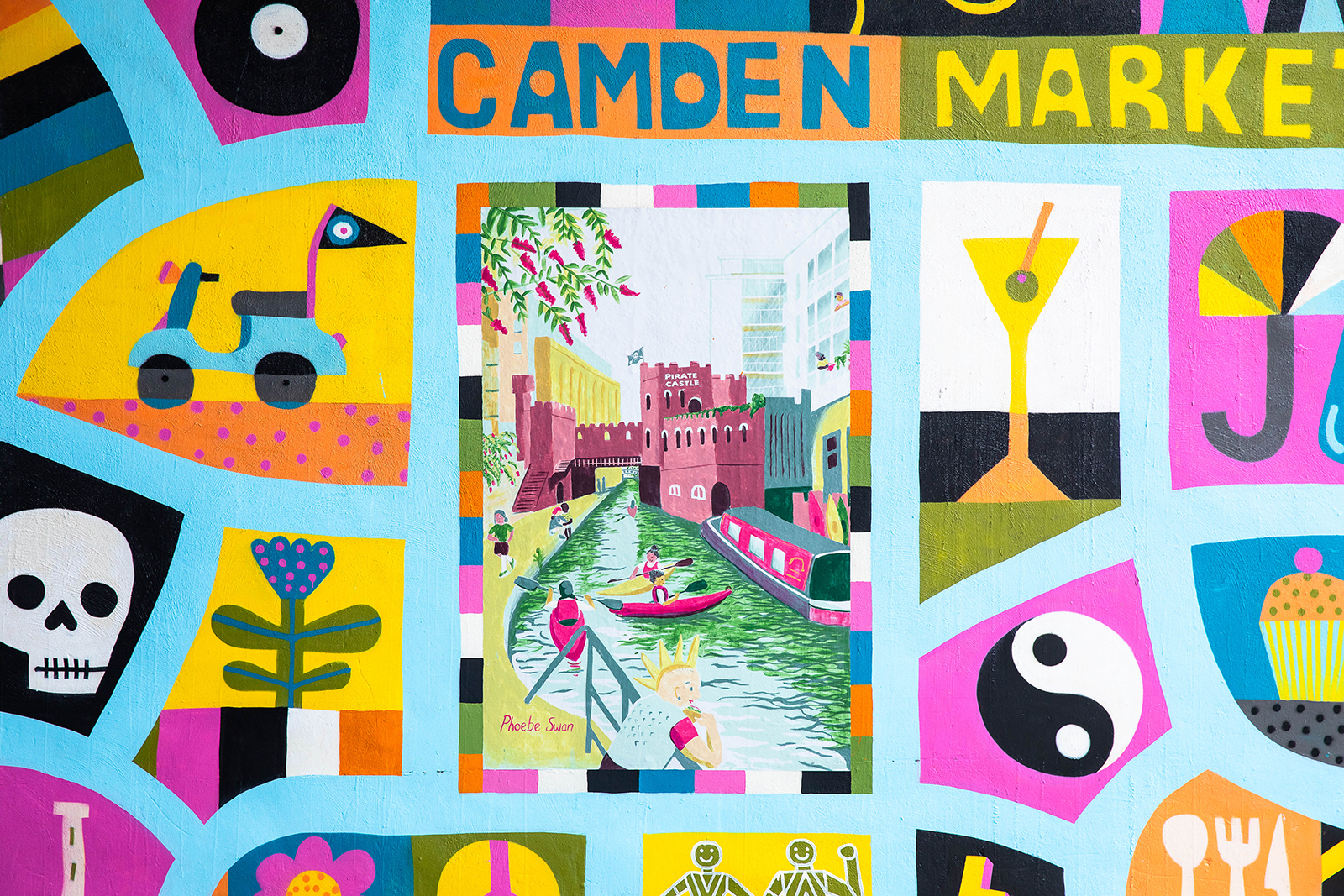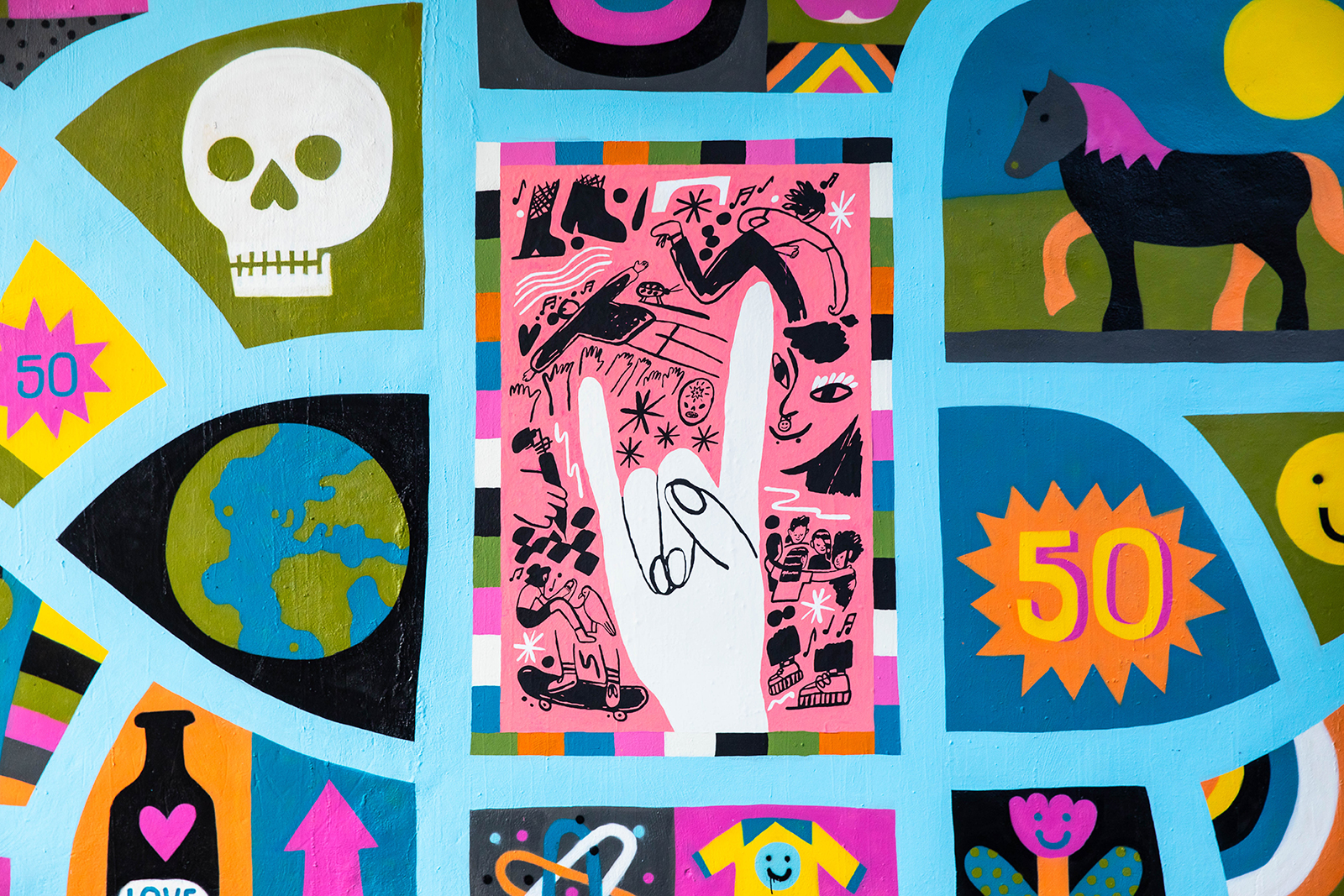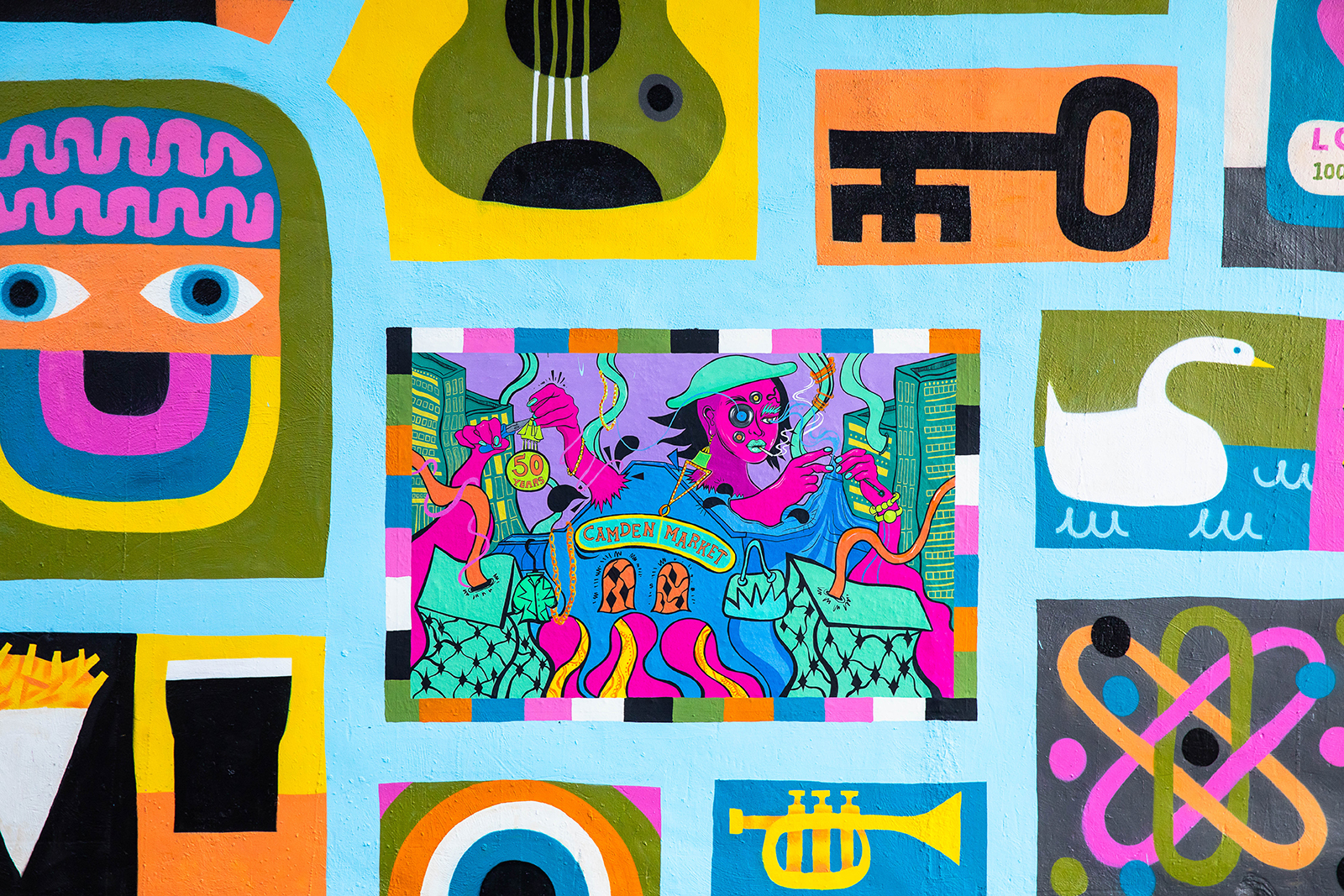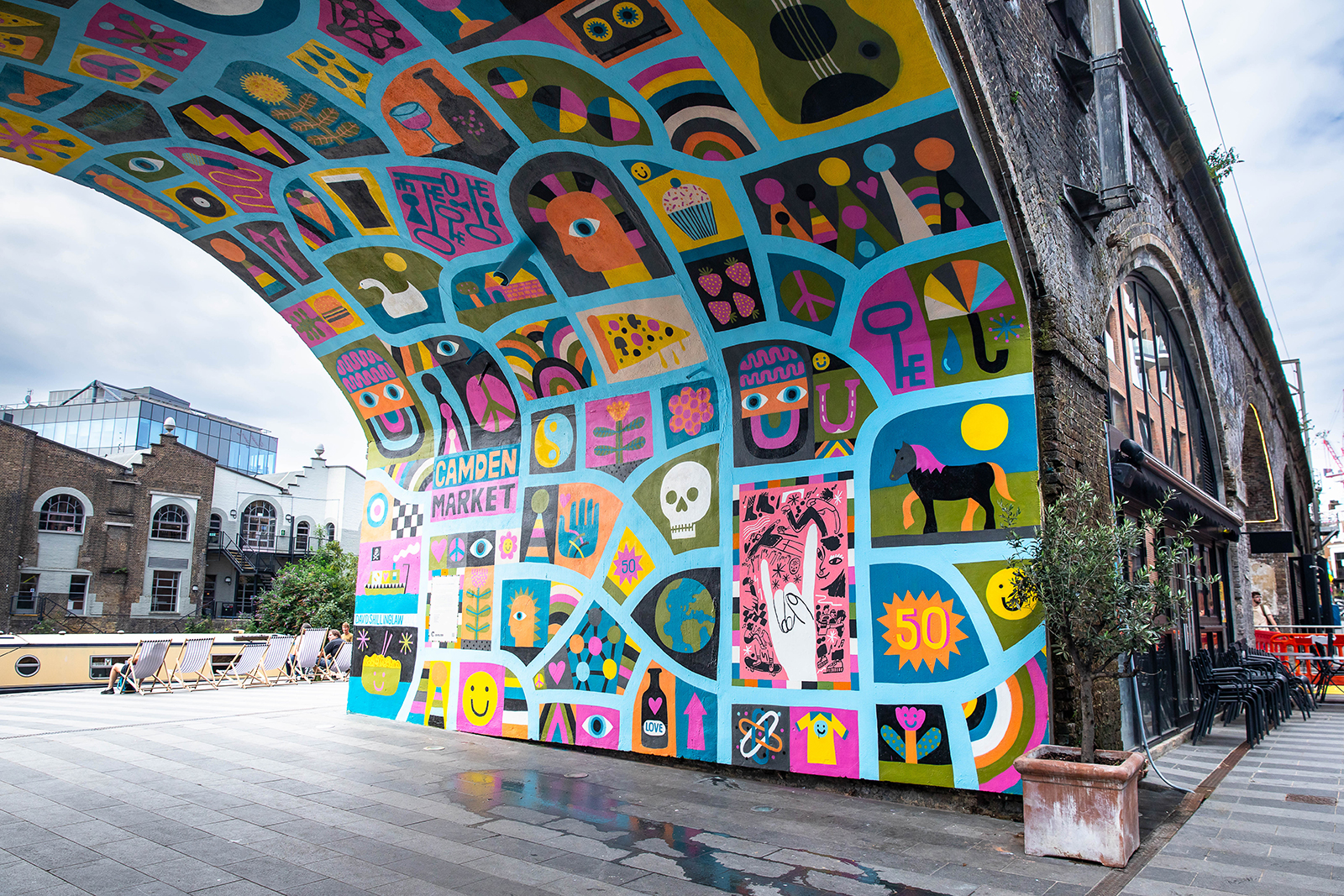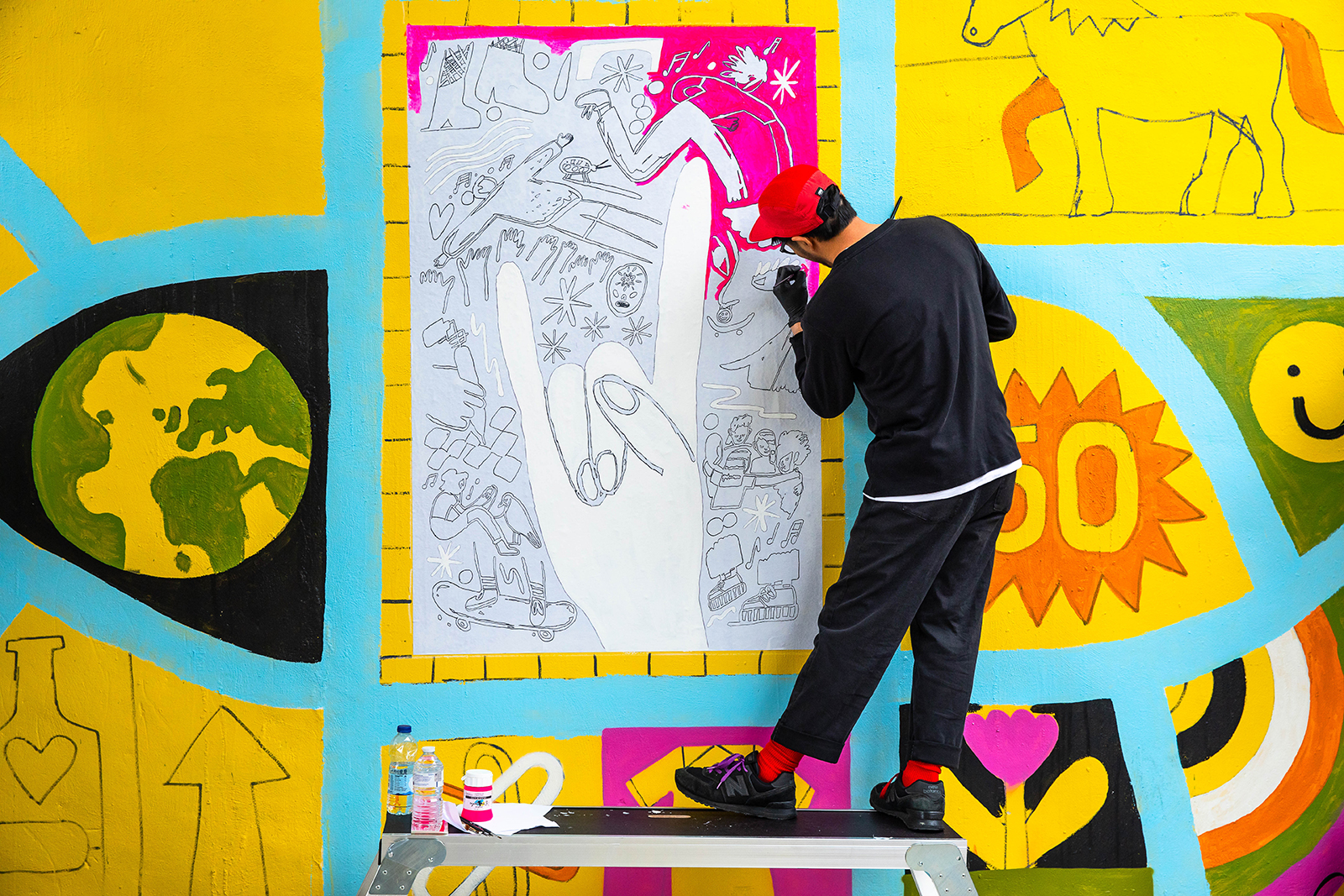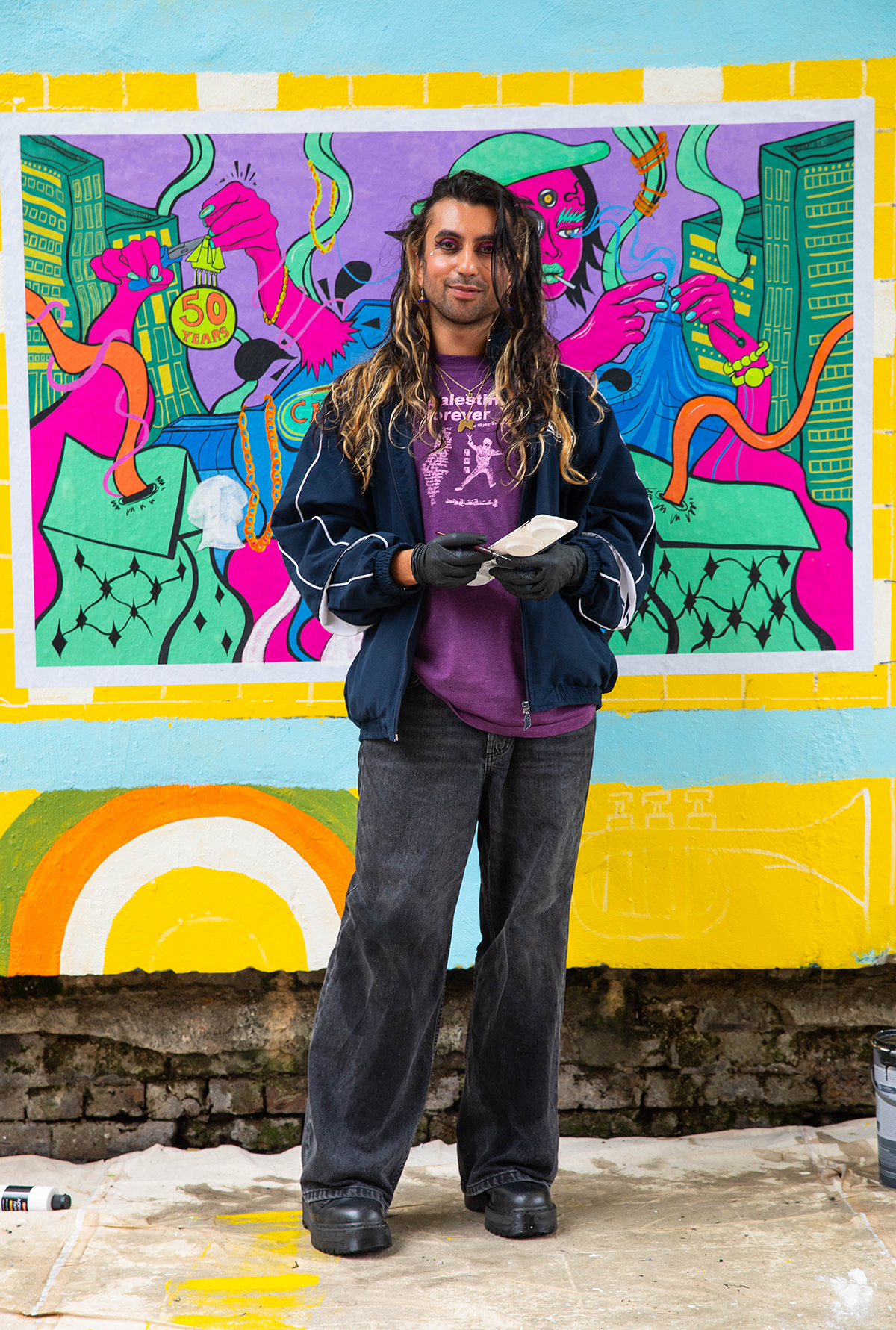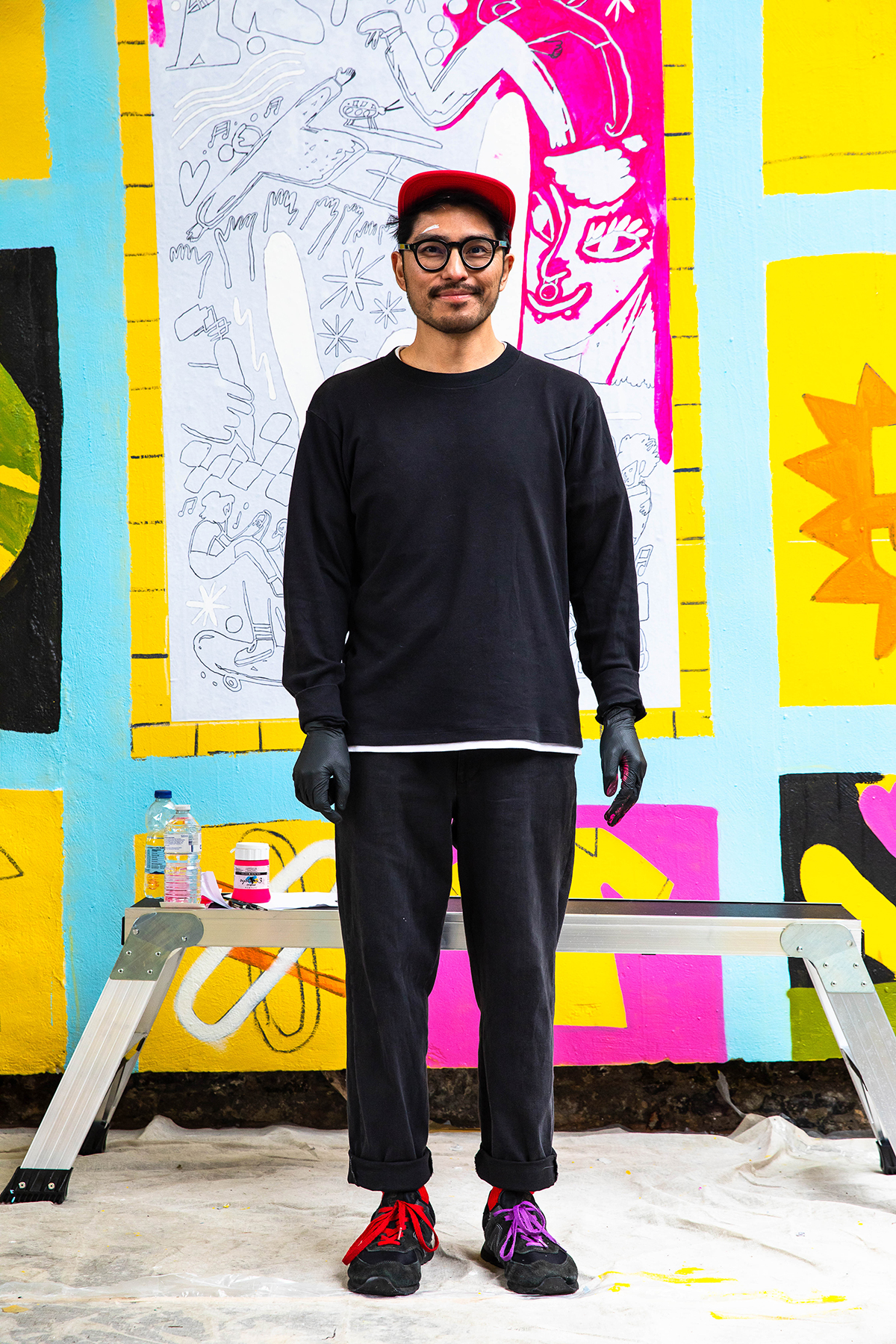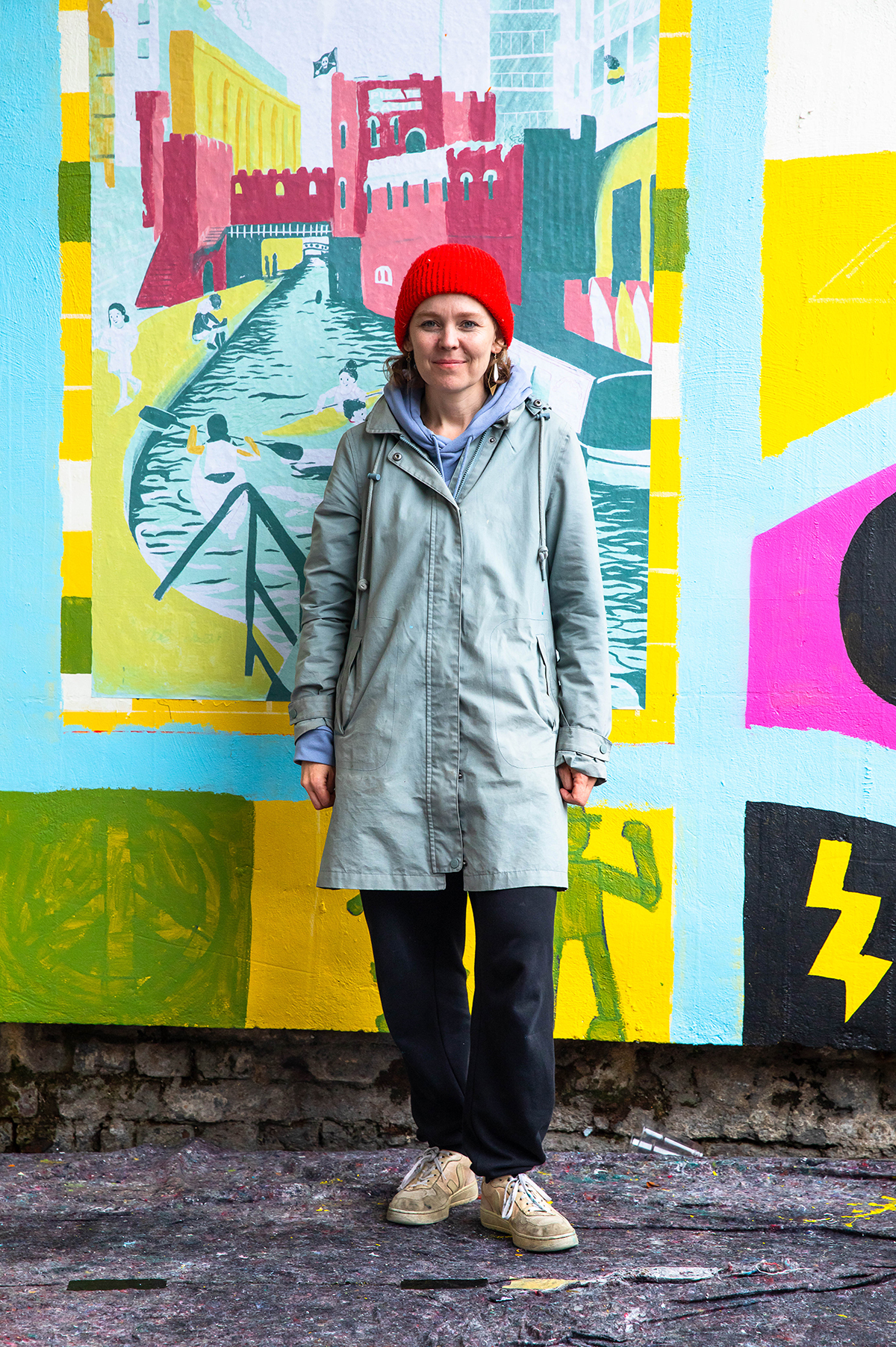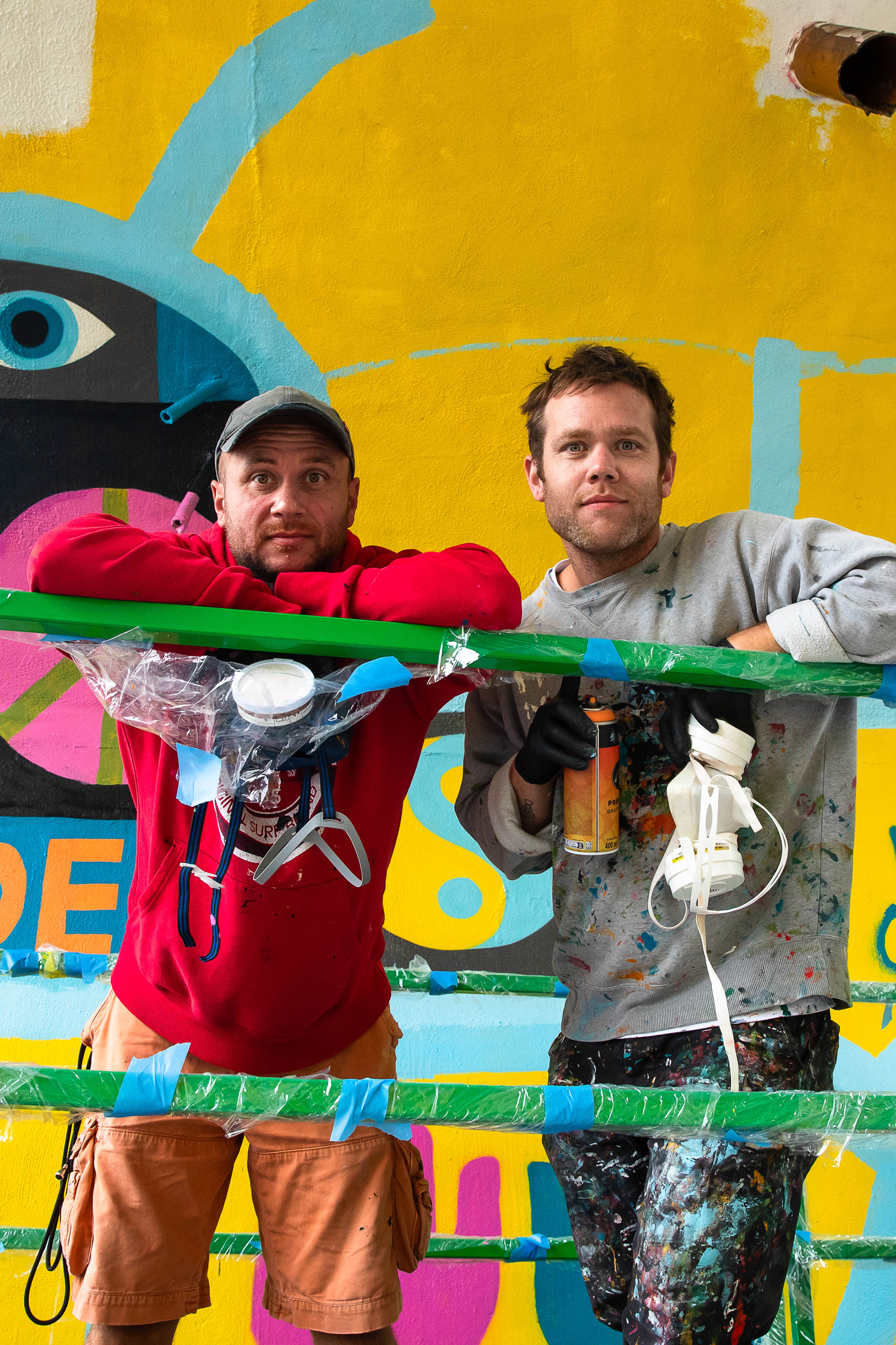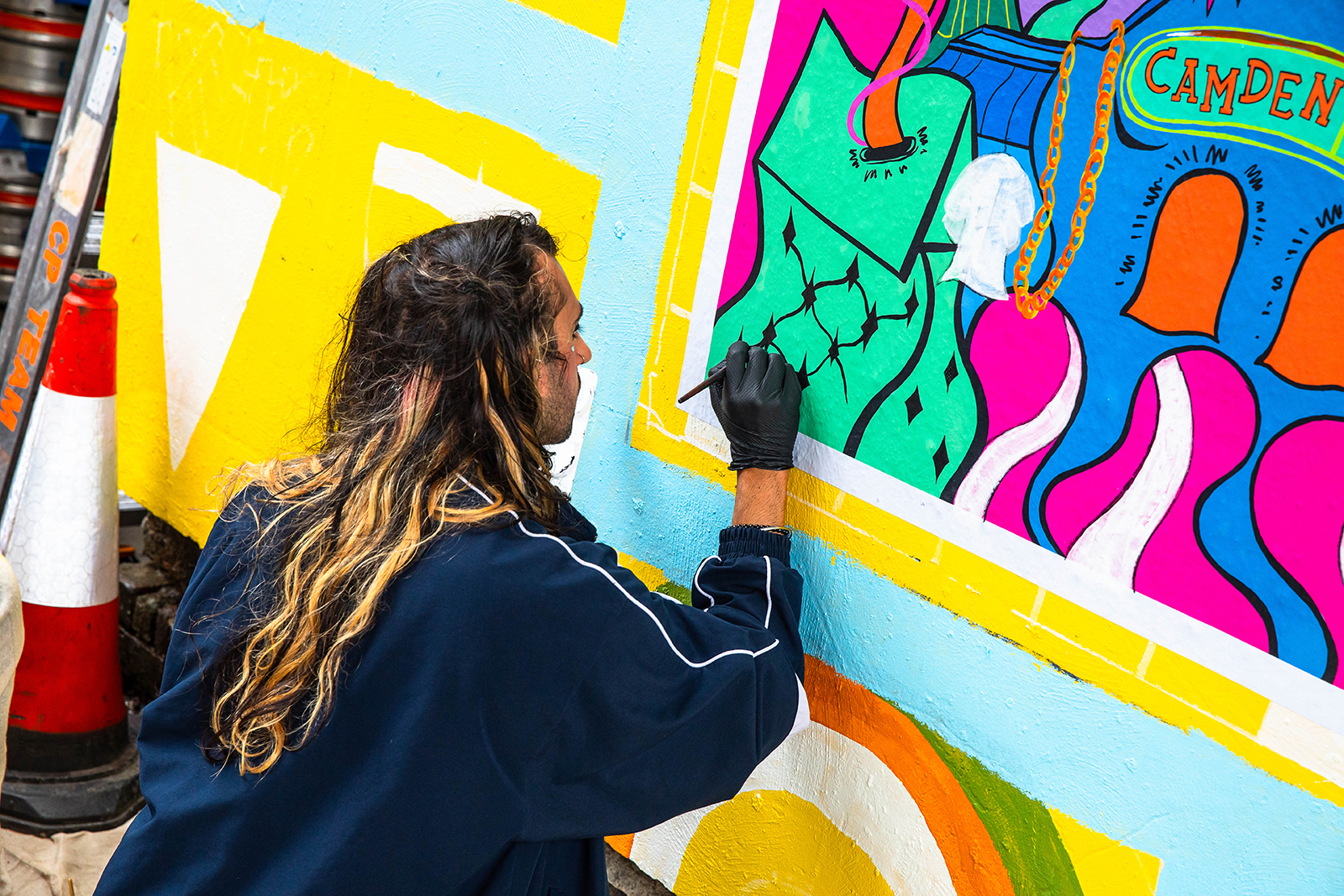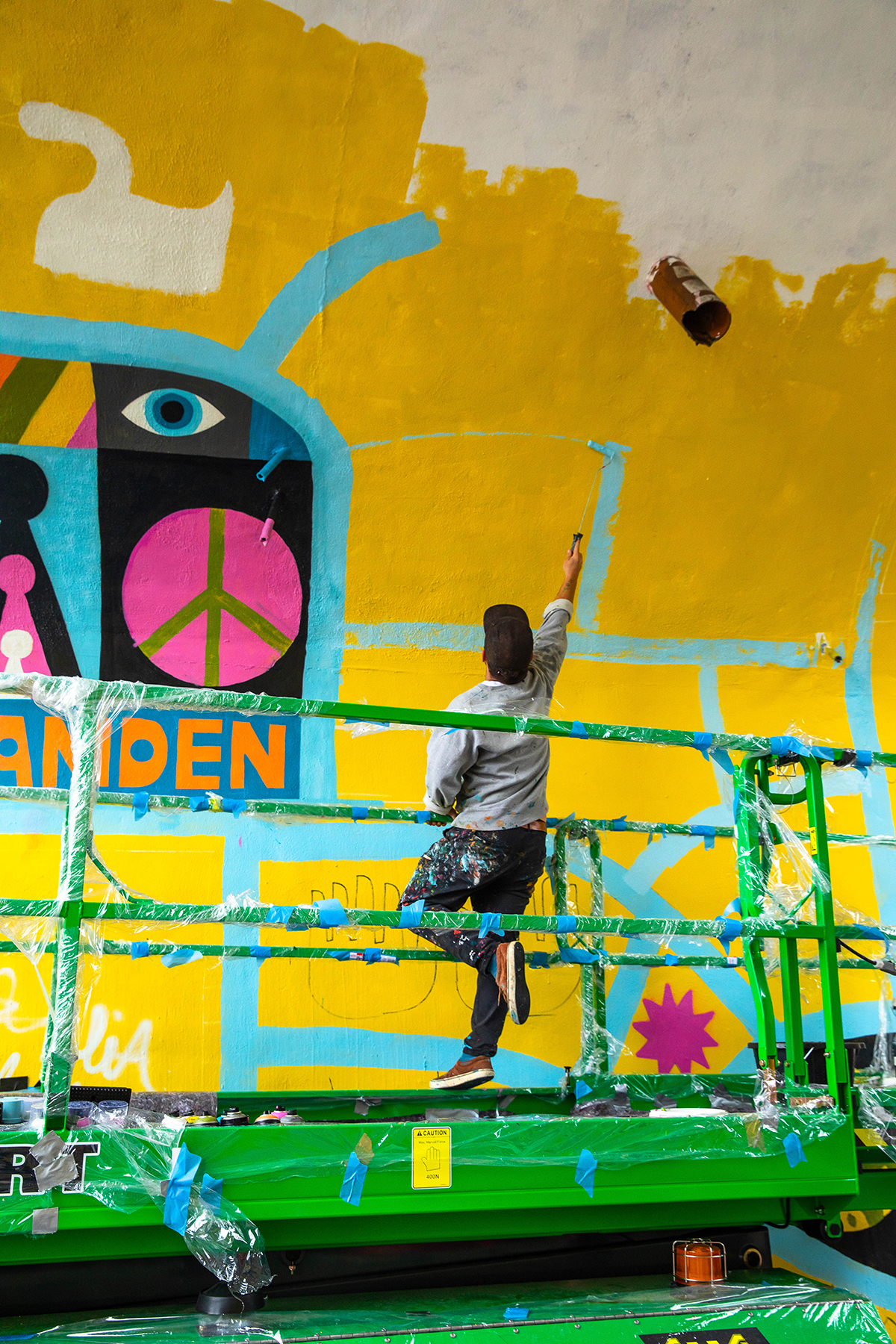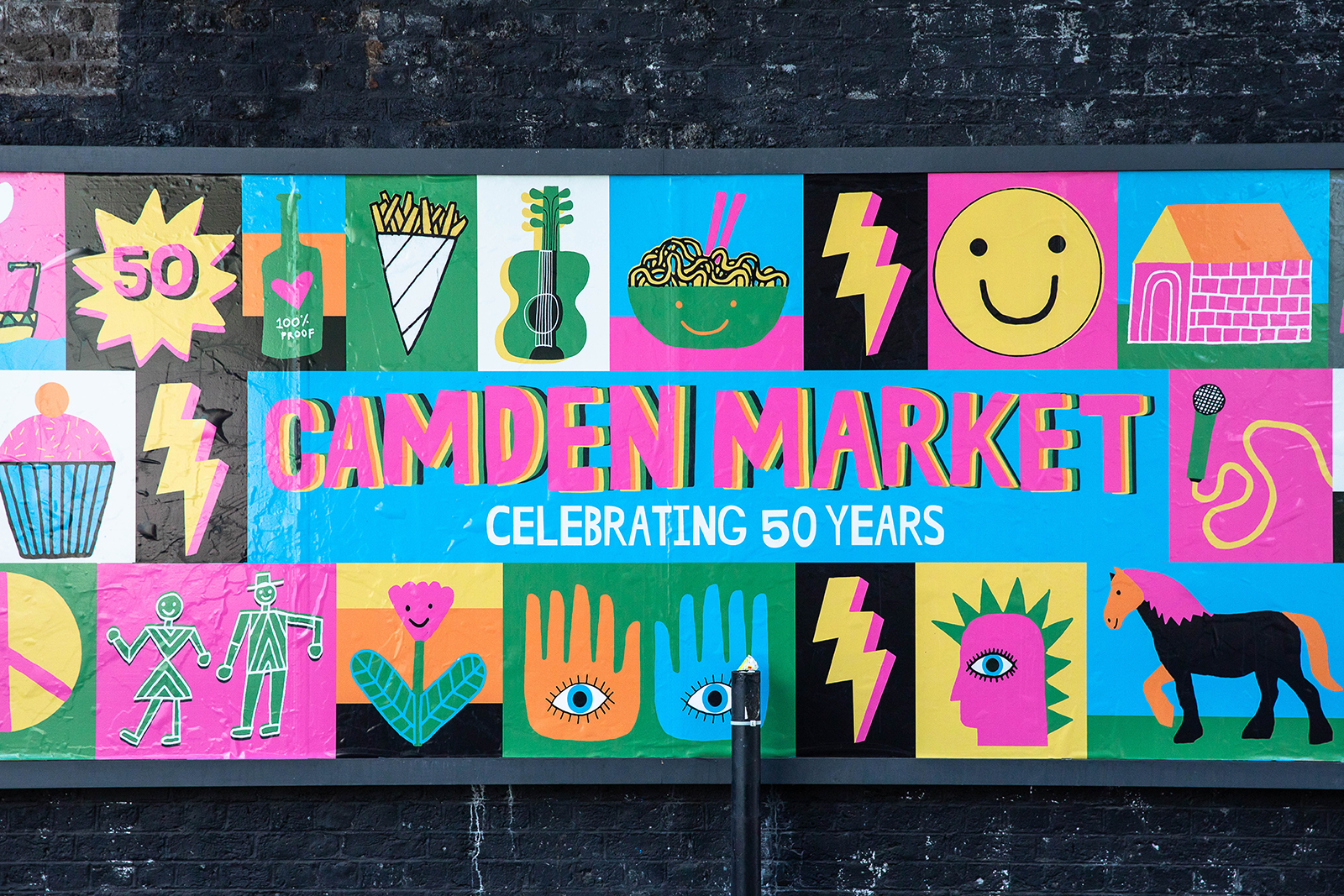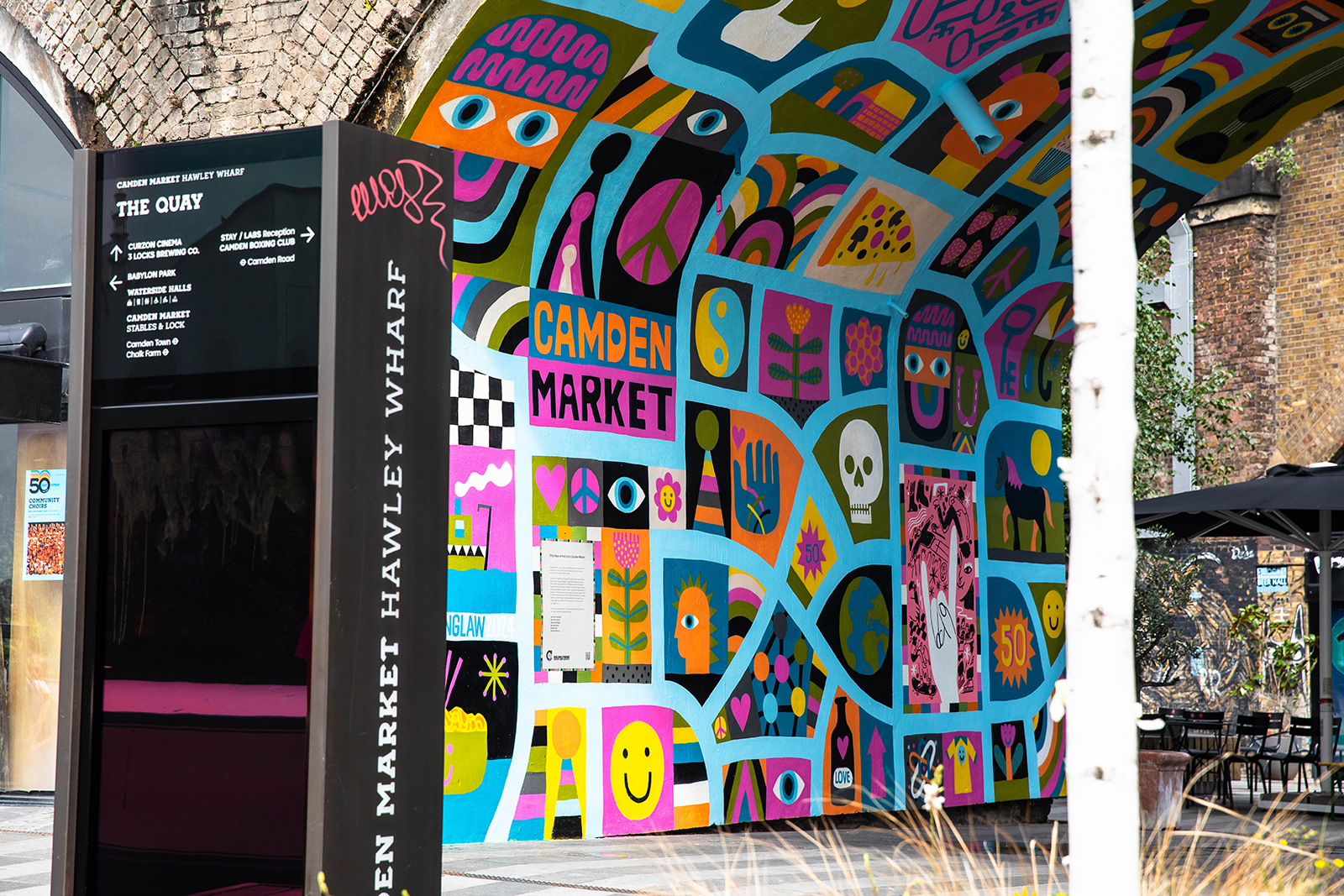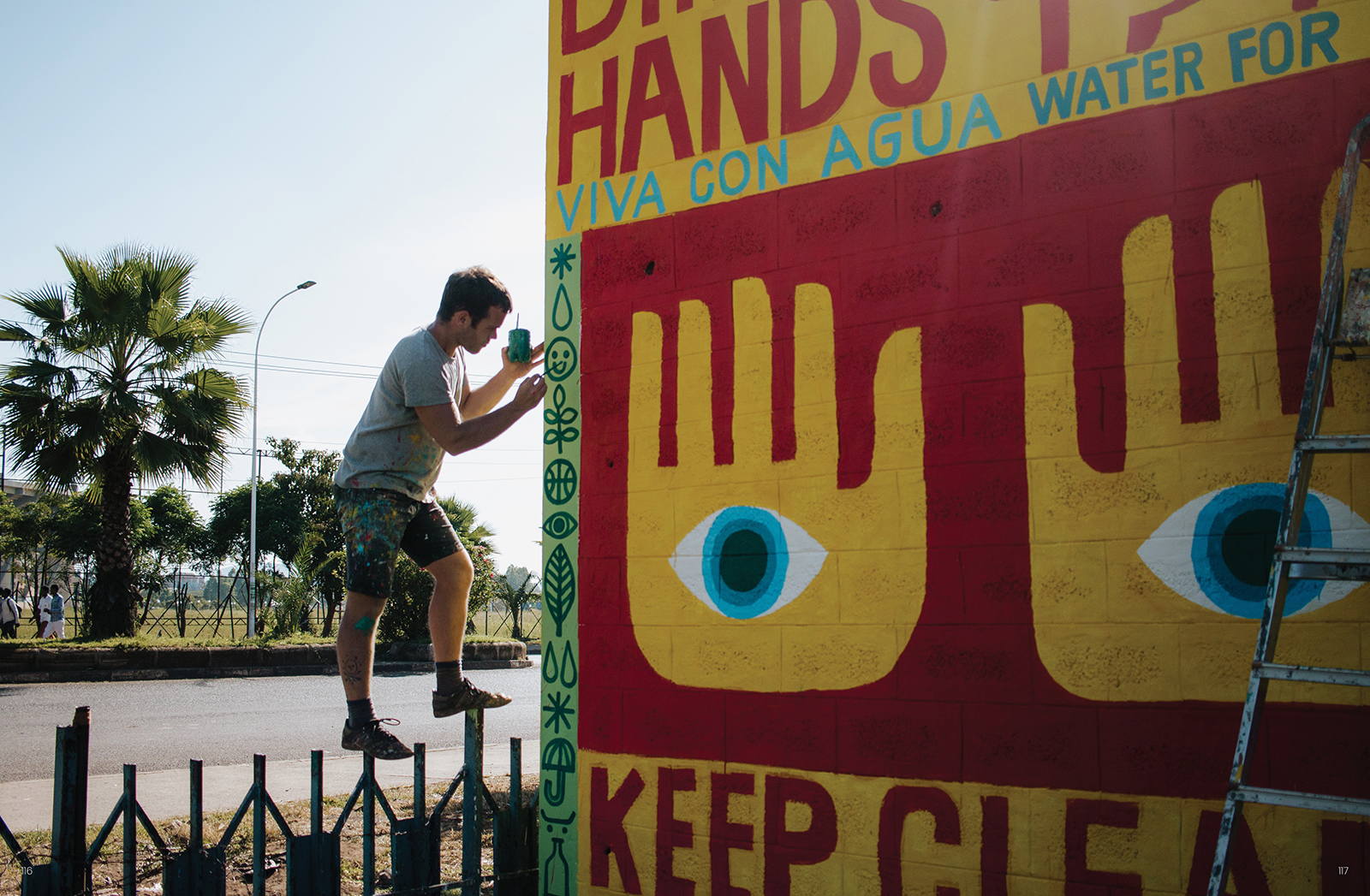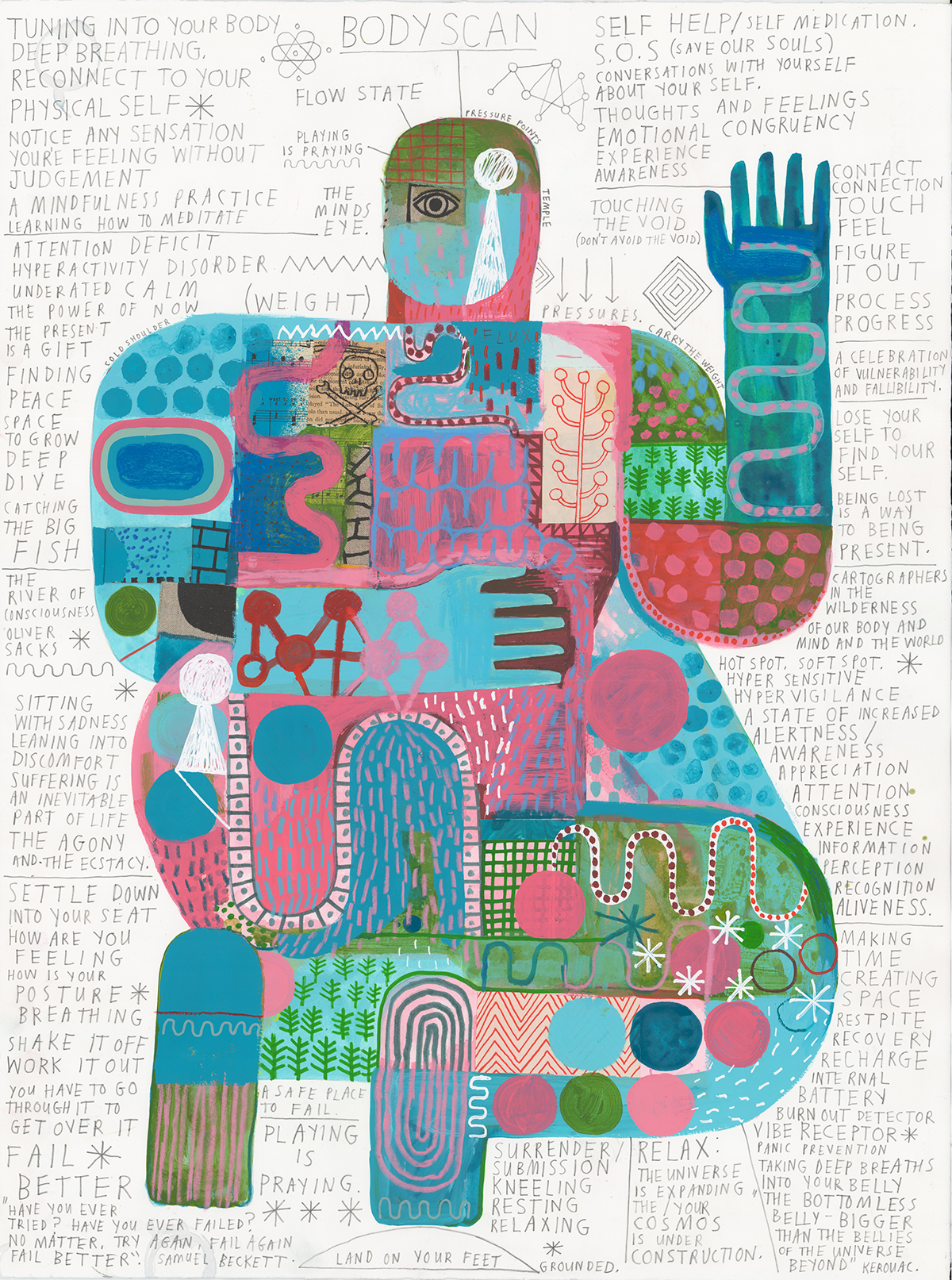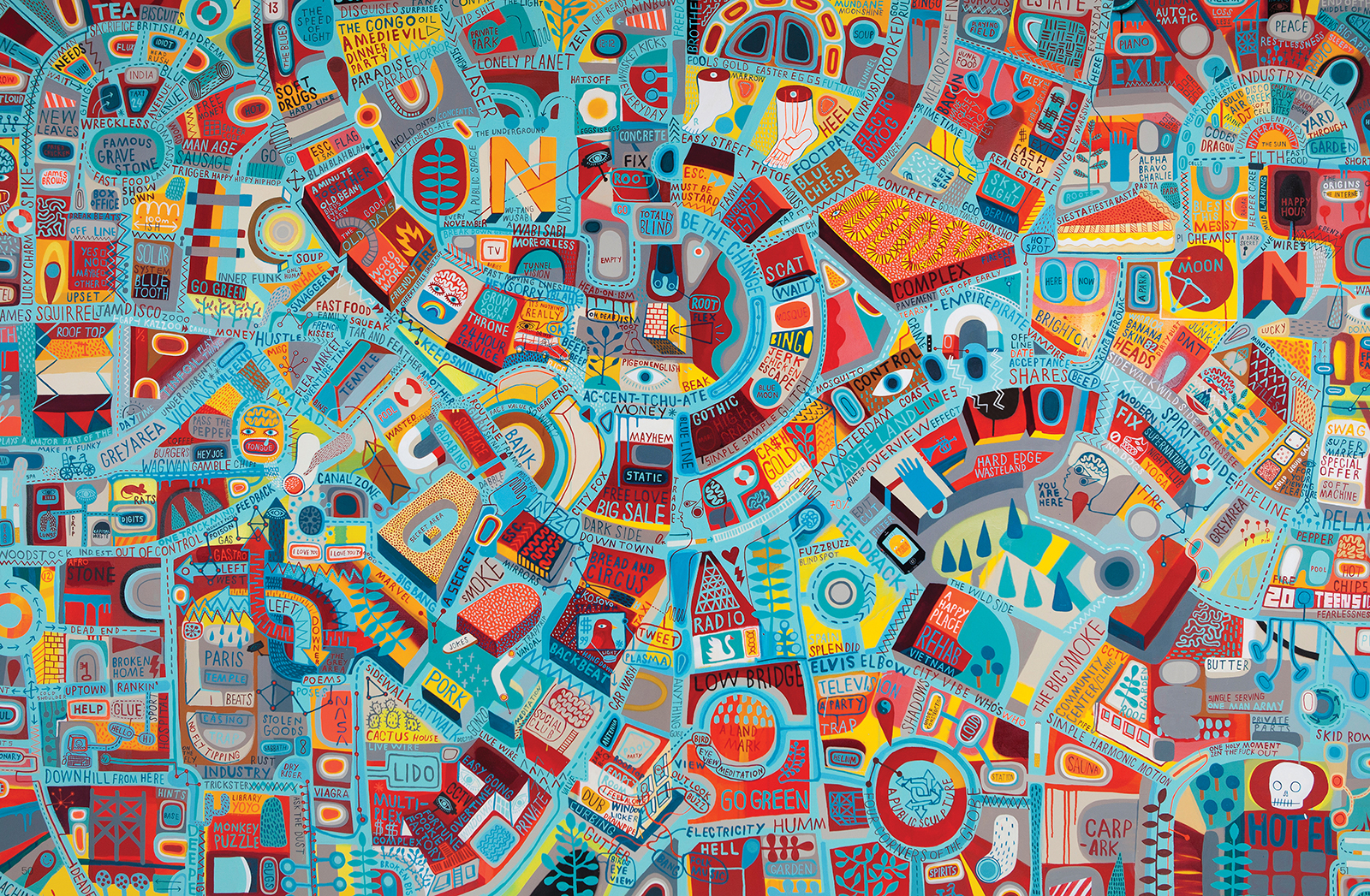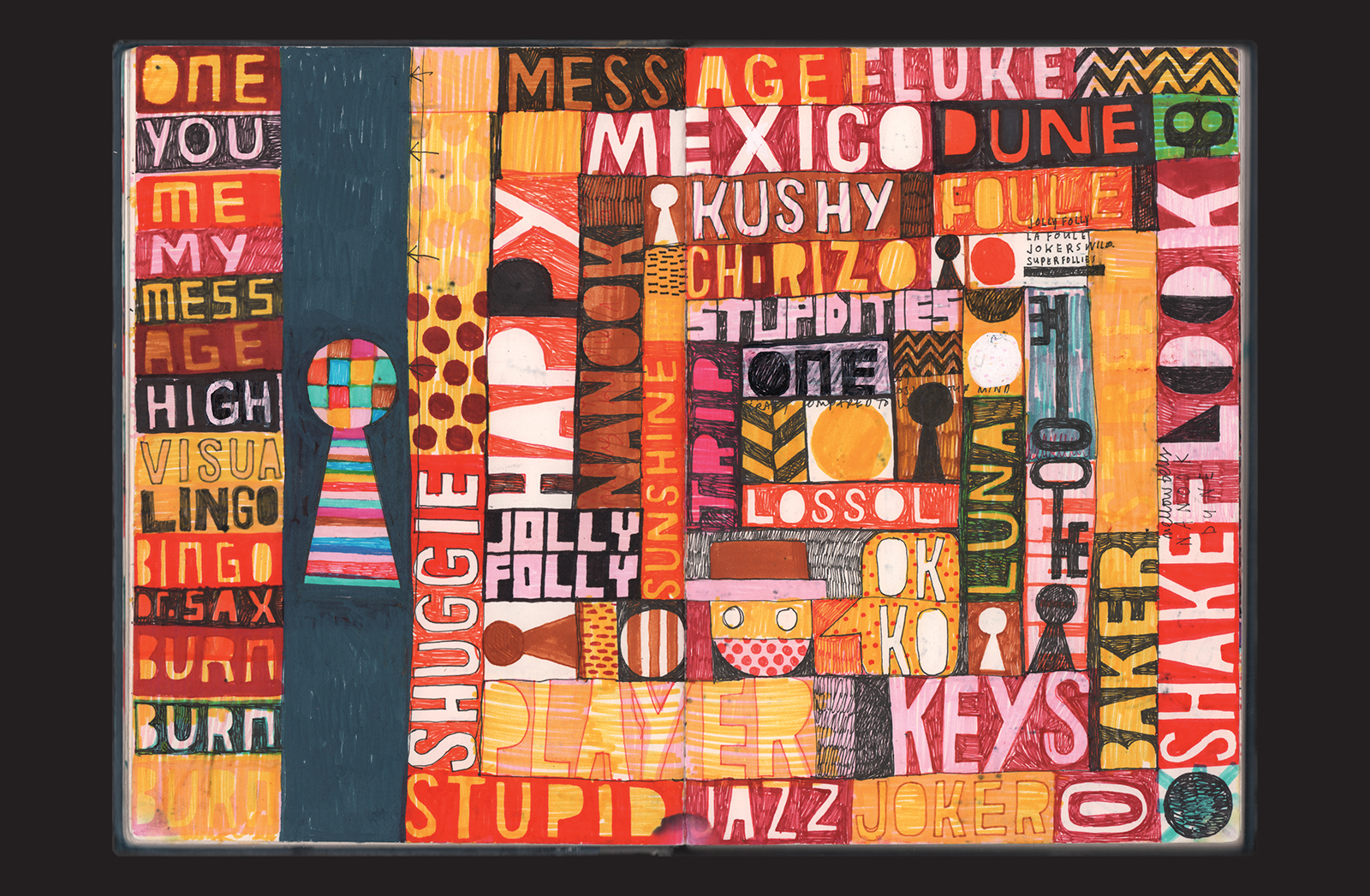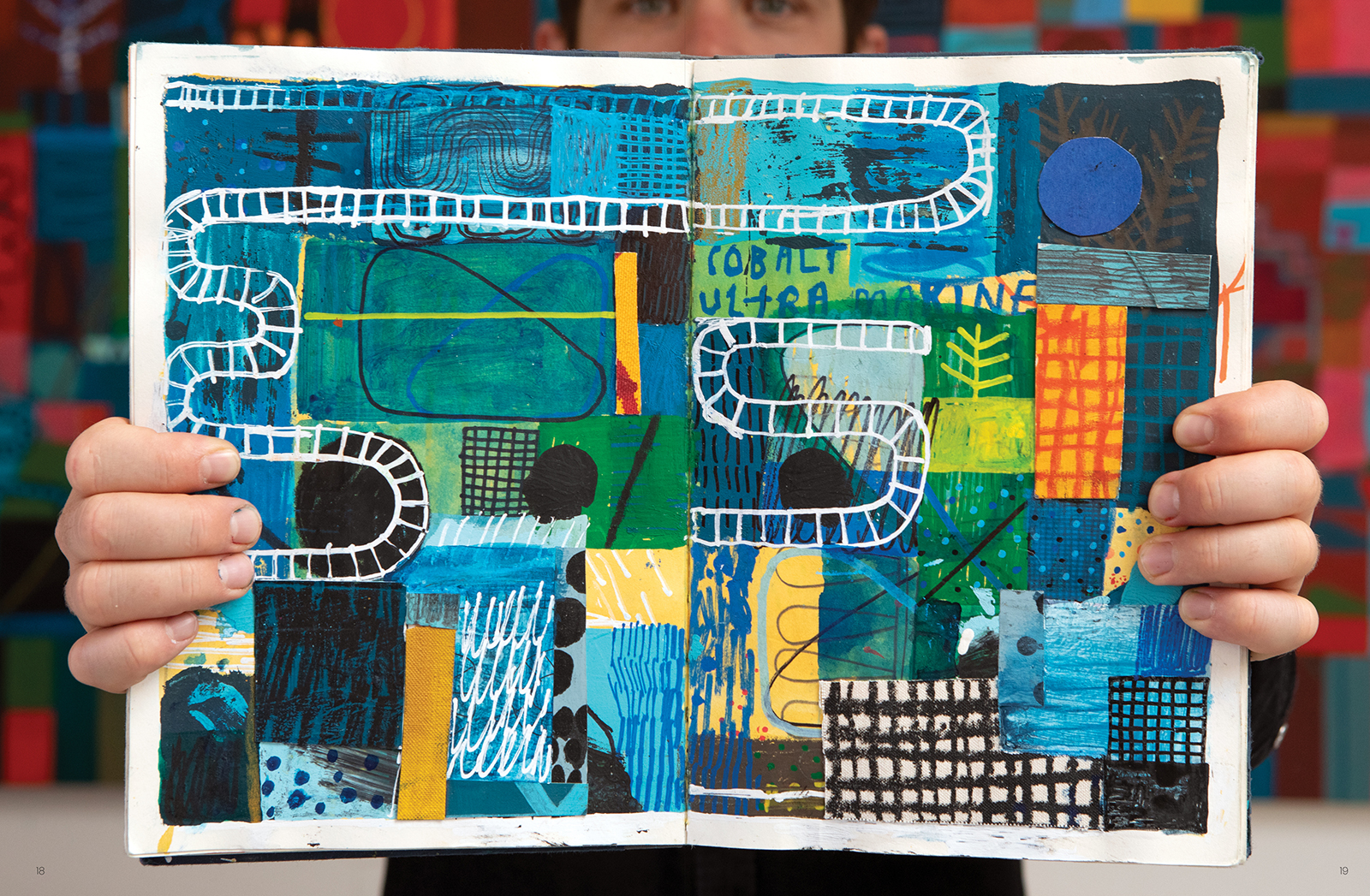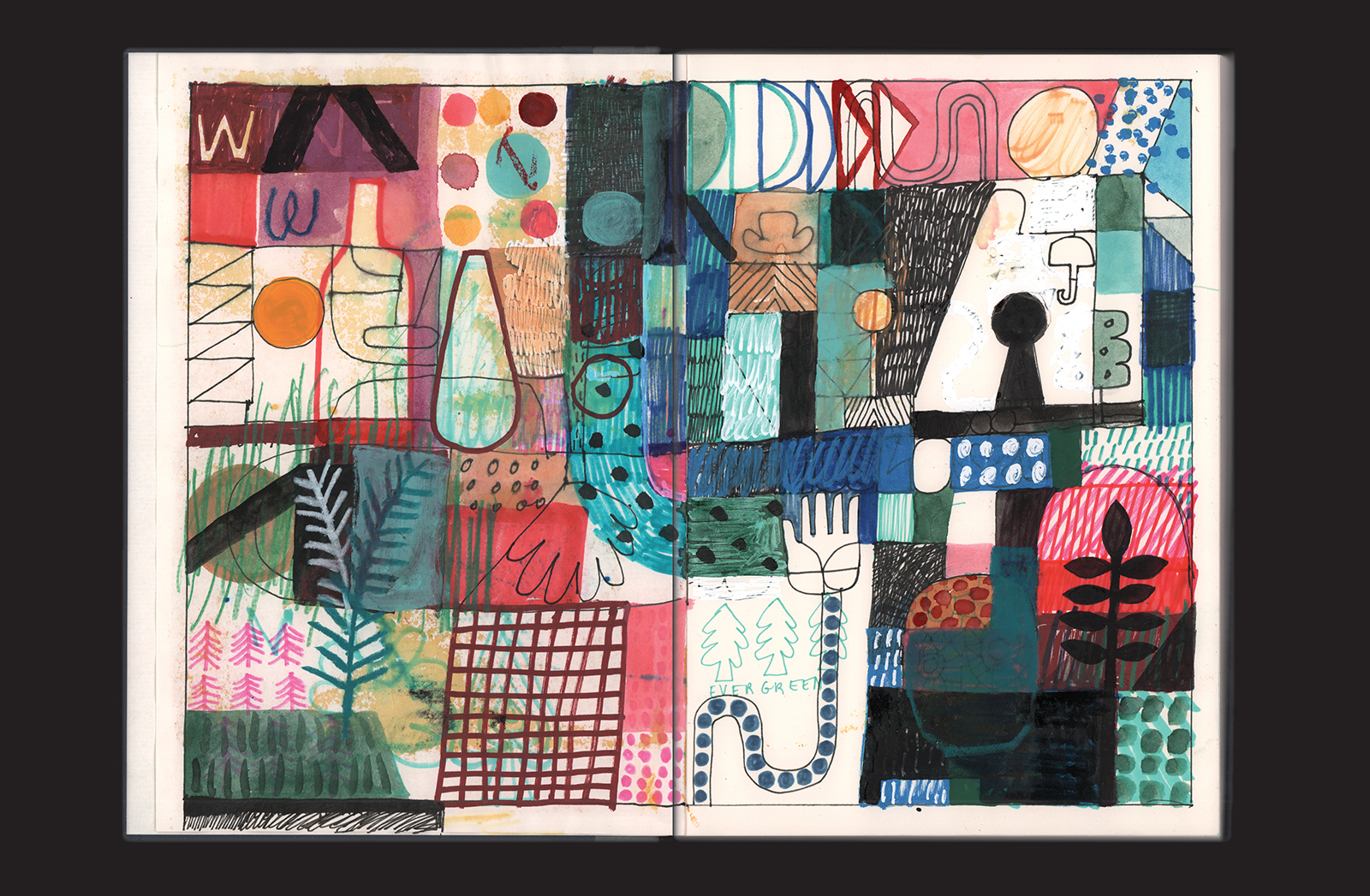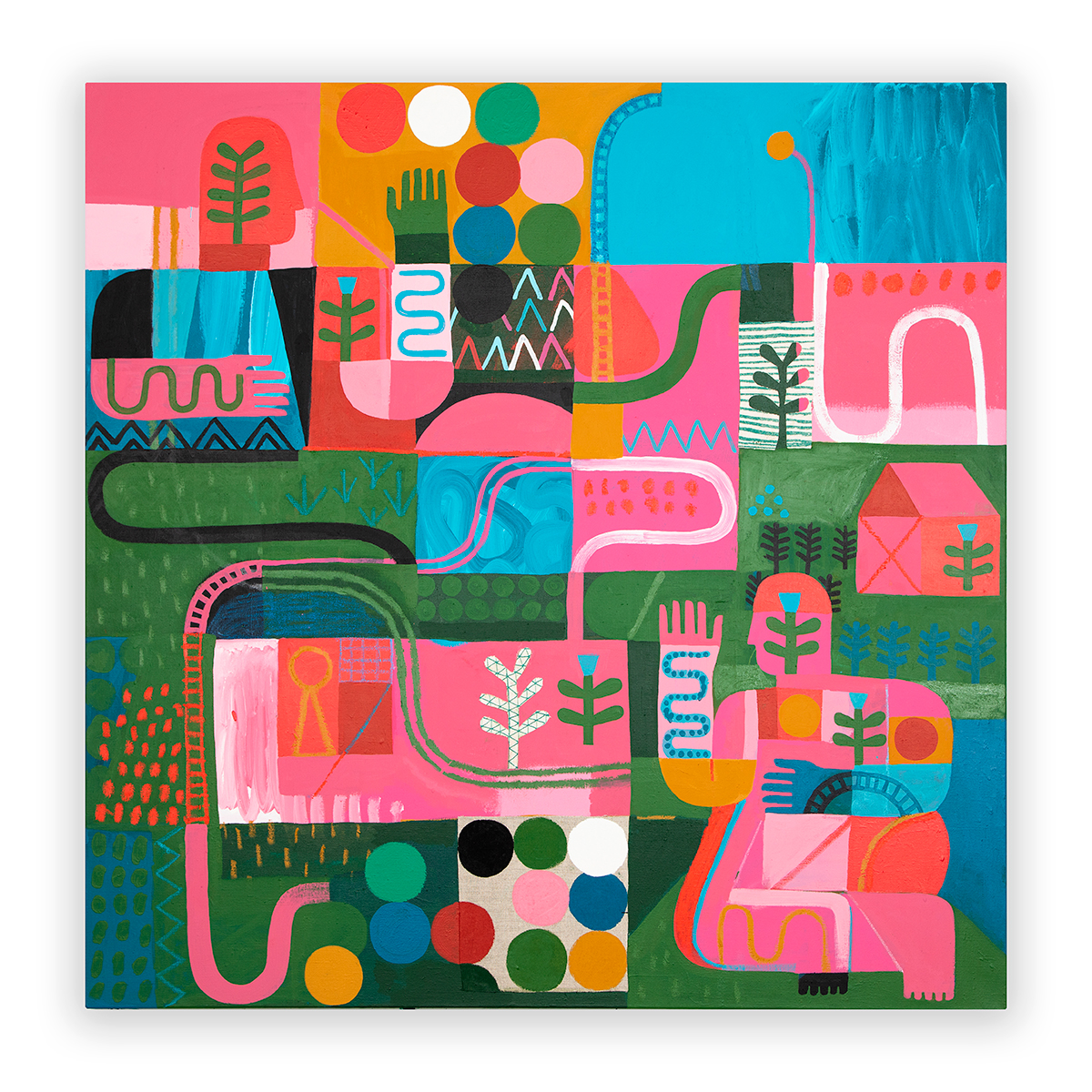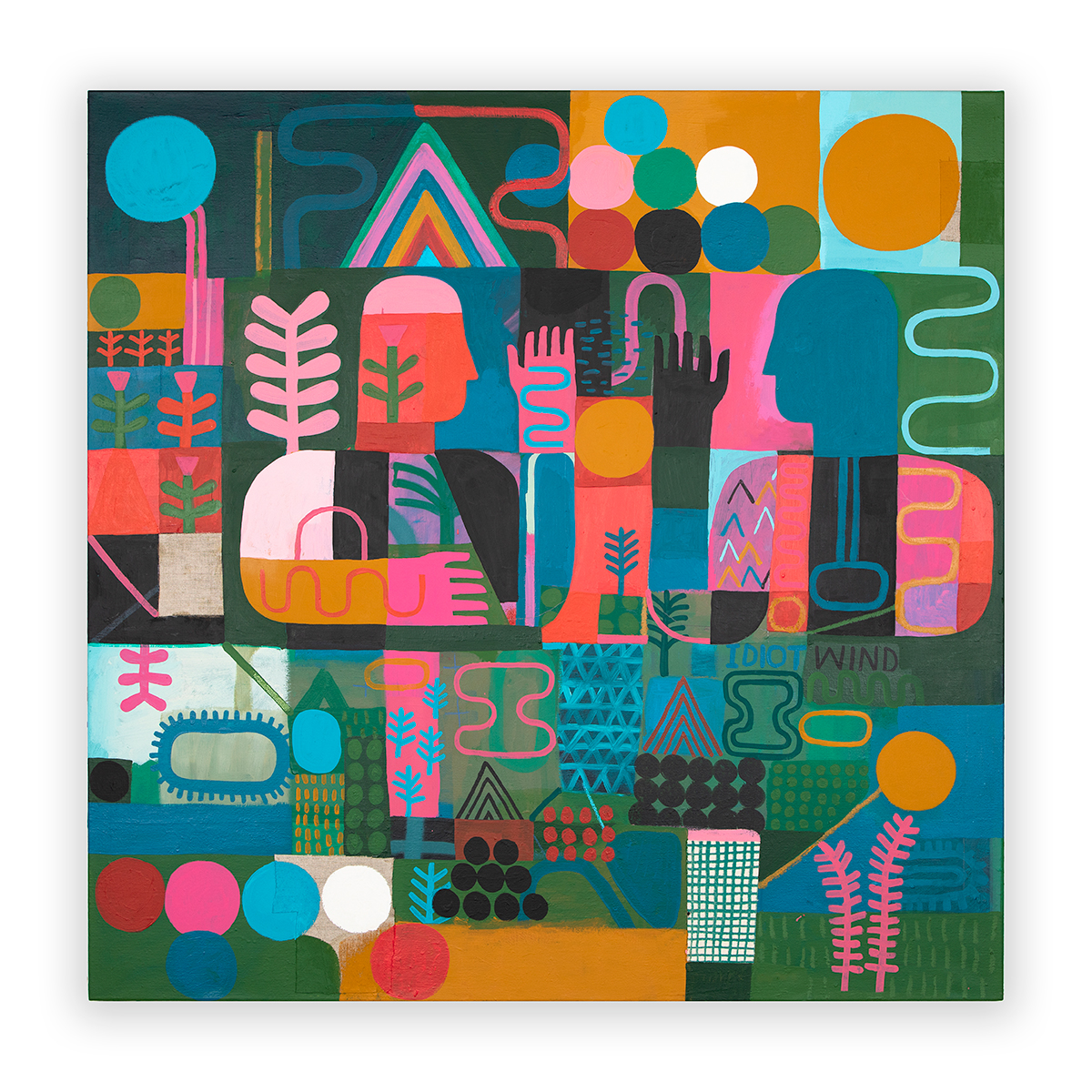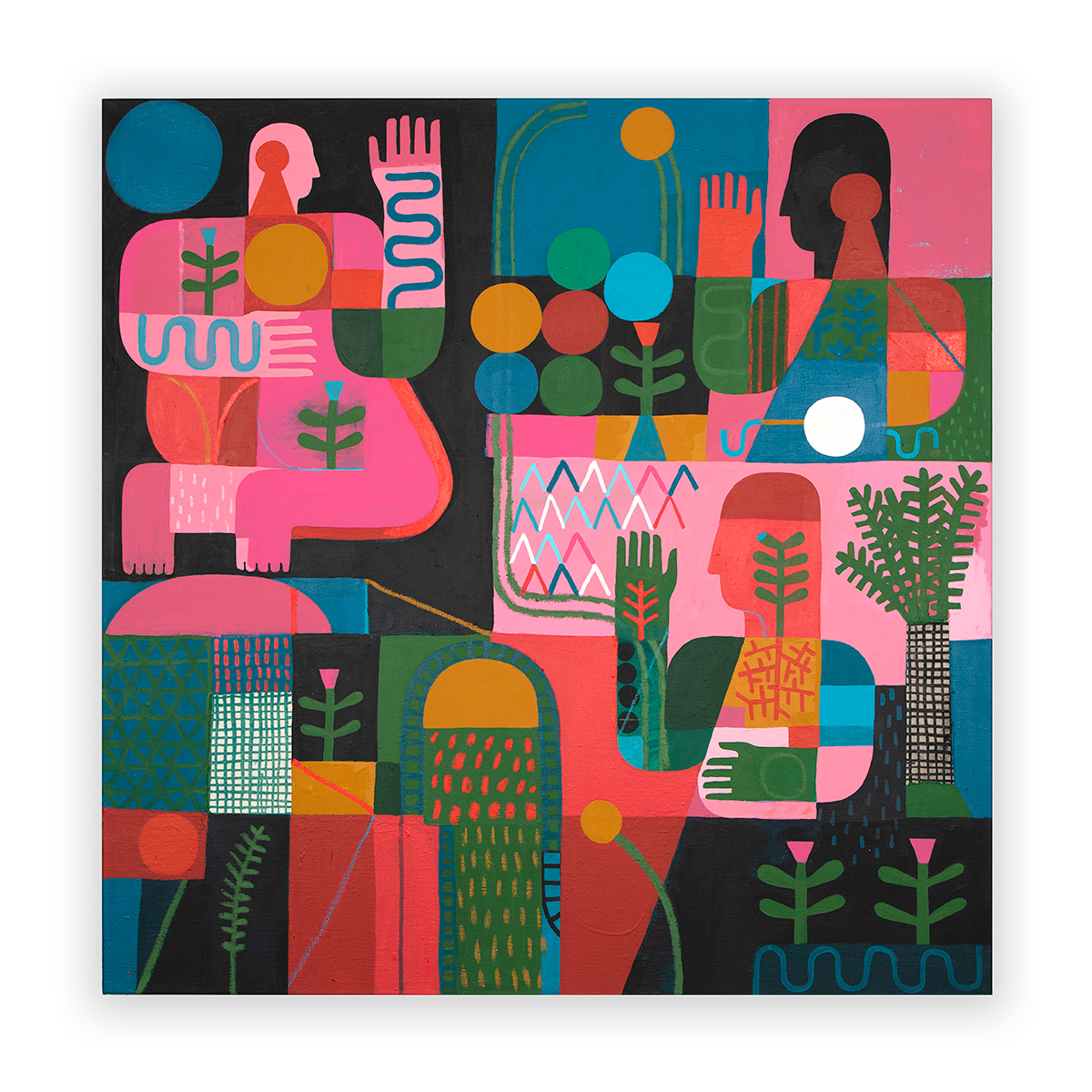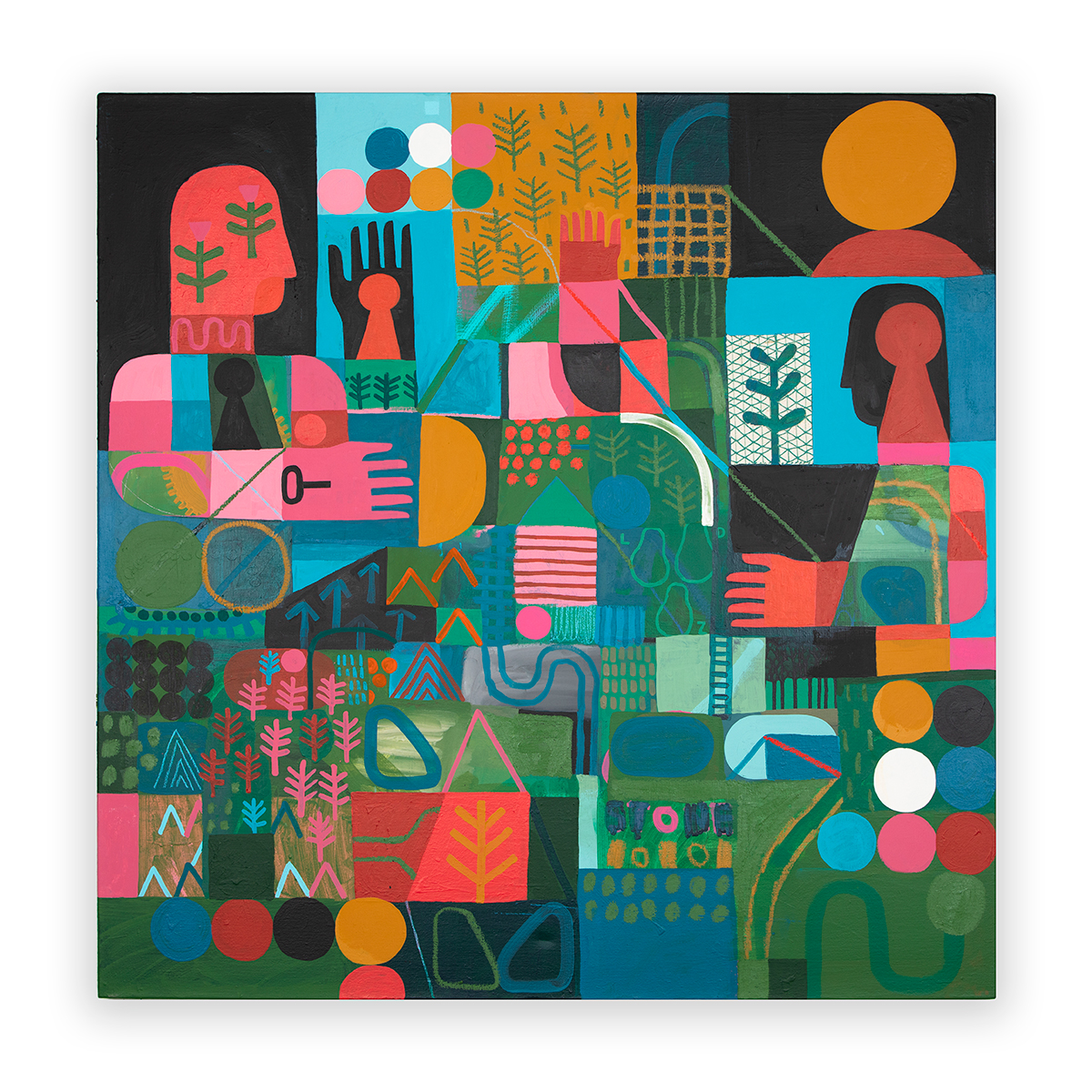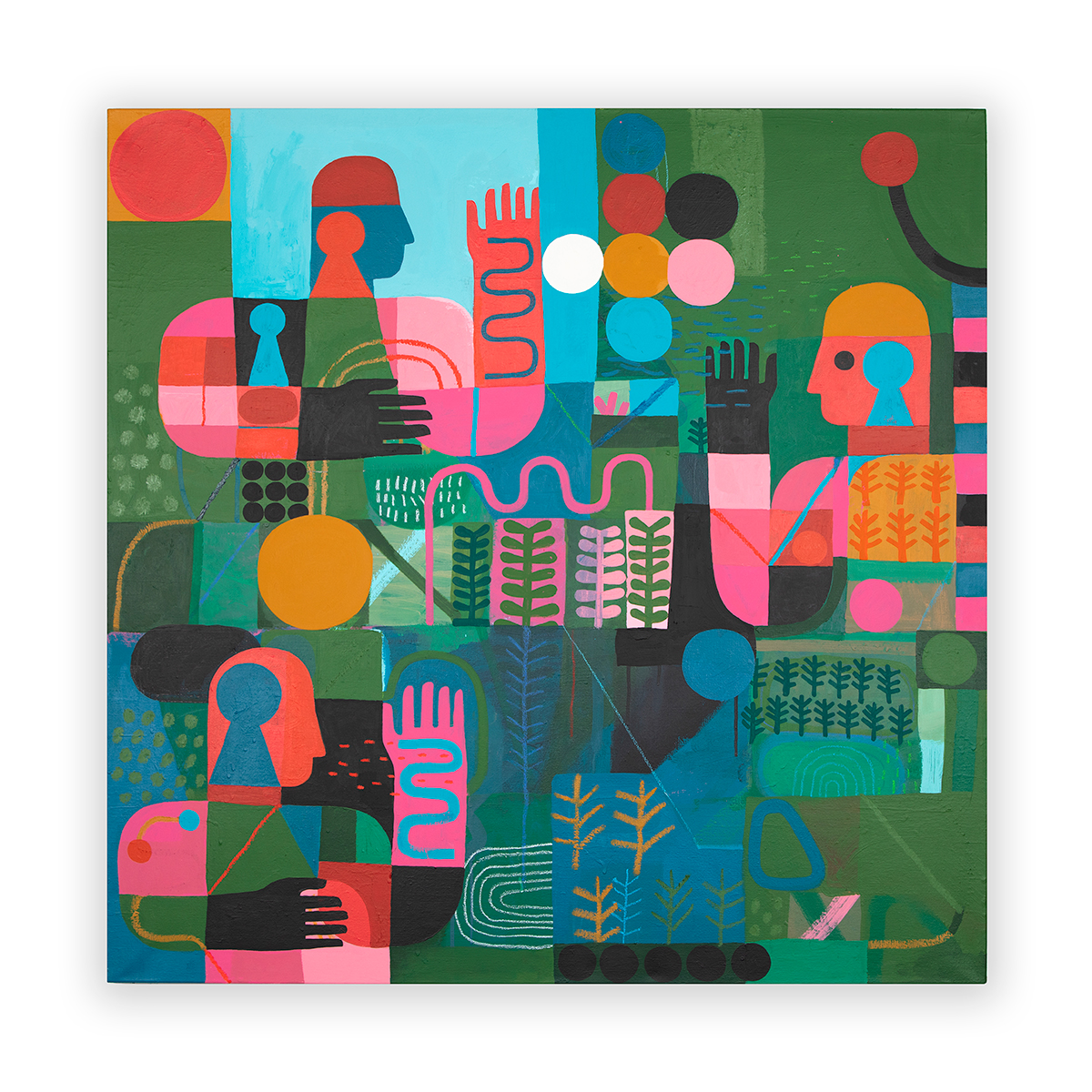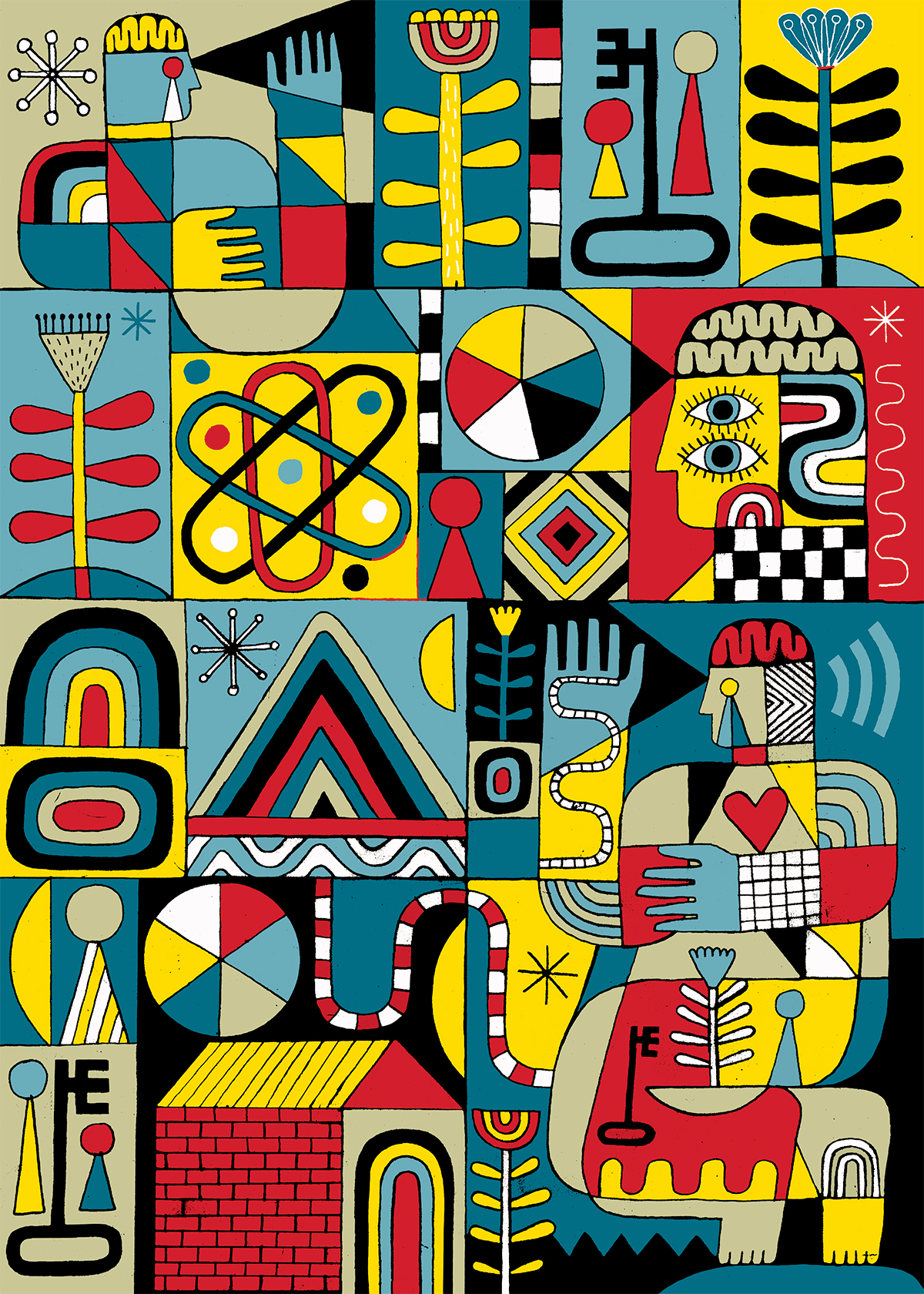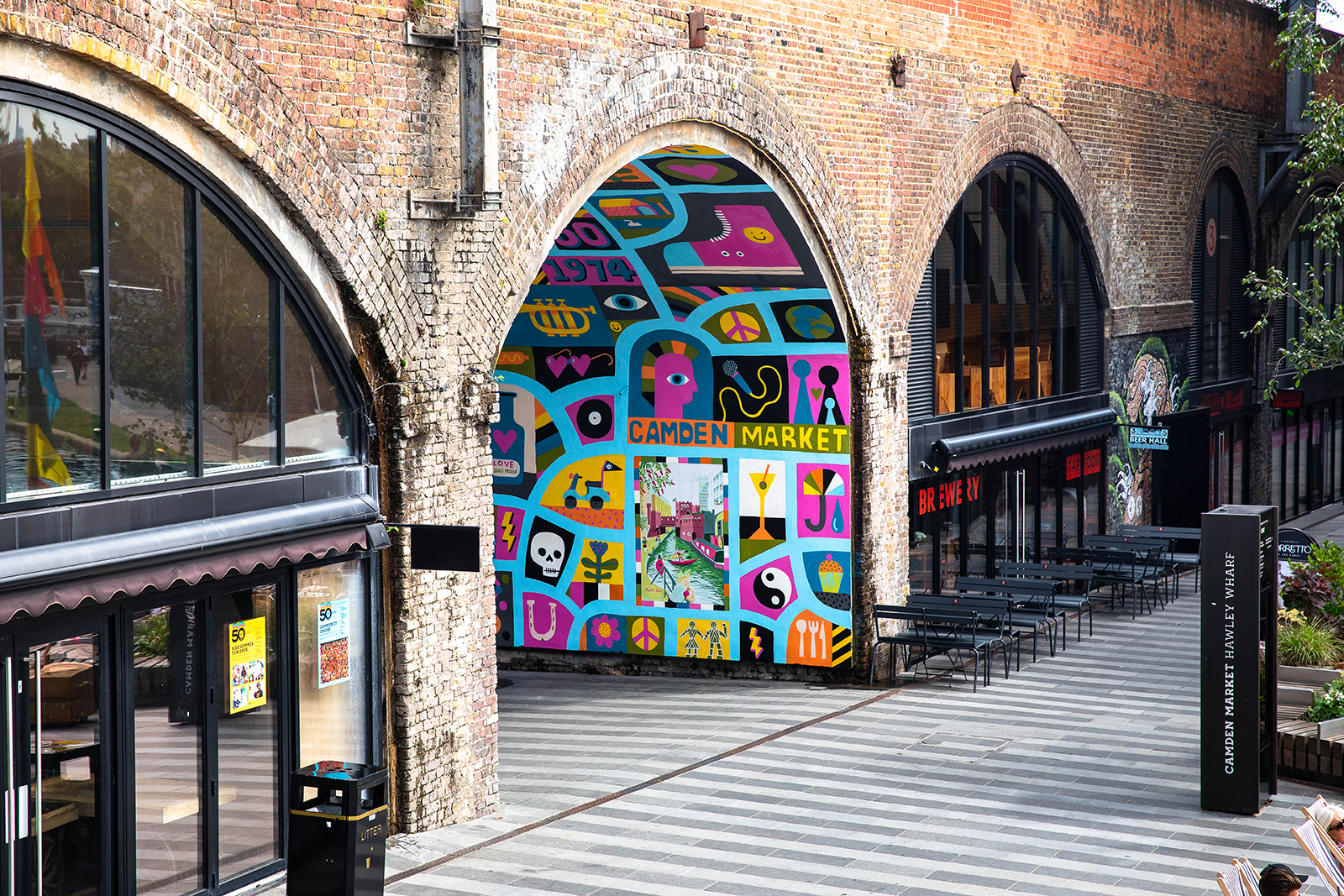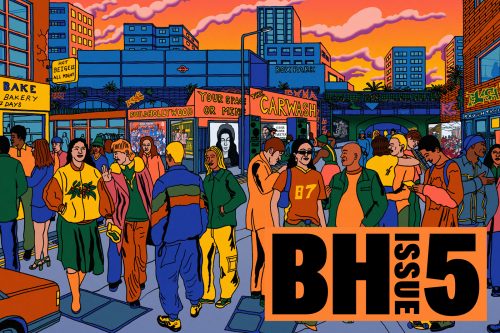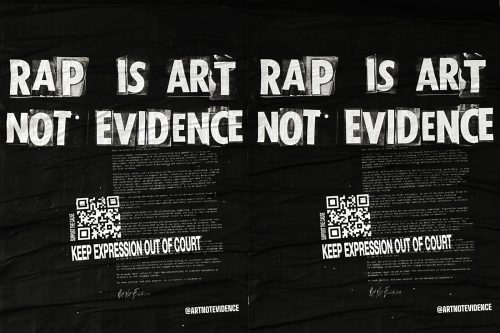Partnerships
Celebrating 50 Years of Camden Market
We interviewed renowned artist David Shillinglaw to learn more about his work on Camden Market and BUILDHOLLYWOOD’s commemorative mural project.
For five decades, Camden Market has represented creativity, subculture and rebellion in London. Now a complex network of interconnecting markets, Camden Market started life as a temporary, weekly arts and crafts fair behind iconic music venue Dingwalls in 1974. Today, it’s the largest market in London, open all year round and drawing in 250,000 visitors a week.
Camden Market has always been intertwined with the music culture of the area. With venues like The Electric Ballroom, The Underworld, the Roundhouse and The Dublin Castle in the vicinity, over the decades the market grew with the local music scenes. Fashion influenced music and vice versa, with the clothes on sale at the market representing the alternative spirit of Camden.
To celebrate 50 years of the iconic space, Camden Market partnered with BUILDHOLLYWOOD on a one-of-a-kind mural to showcase its vibrant past, present and future. BUILDHOLLYWOOD curated the artists and produced the project from start to finish, they also created artwork for billboards currently dotted around Camden. Inspired by the five colourful decades of the market, tracing its humble beginnings through its music-filled history to the tourist destination it is today.
25.07.24
Words by


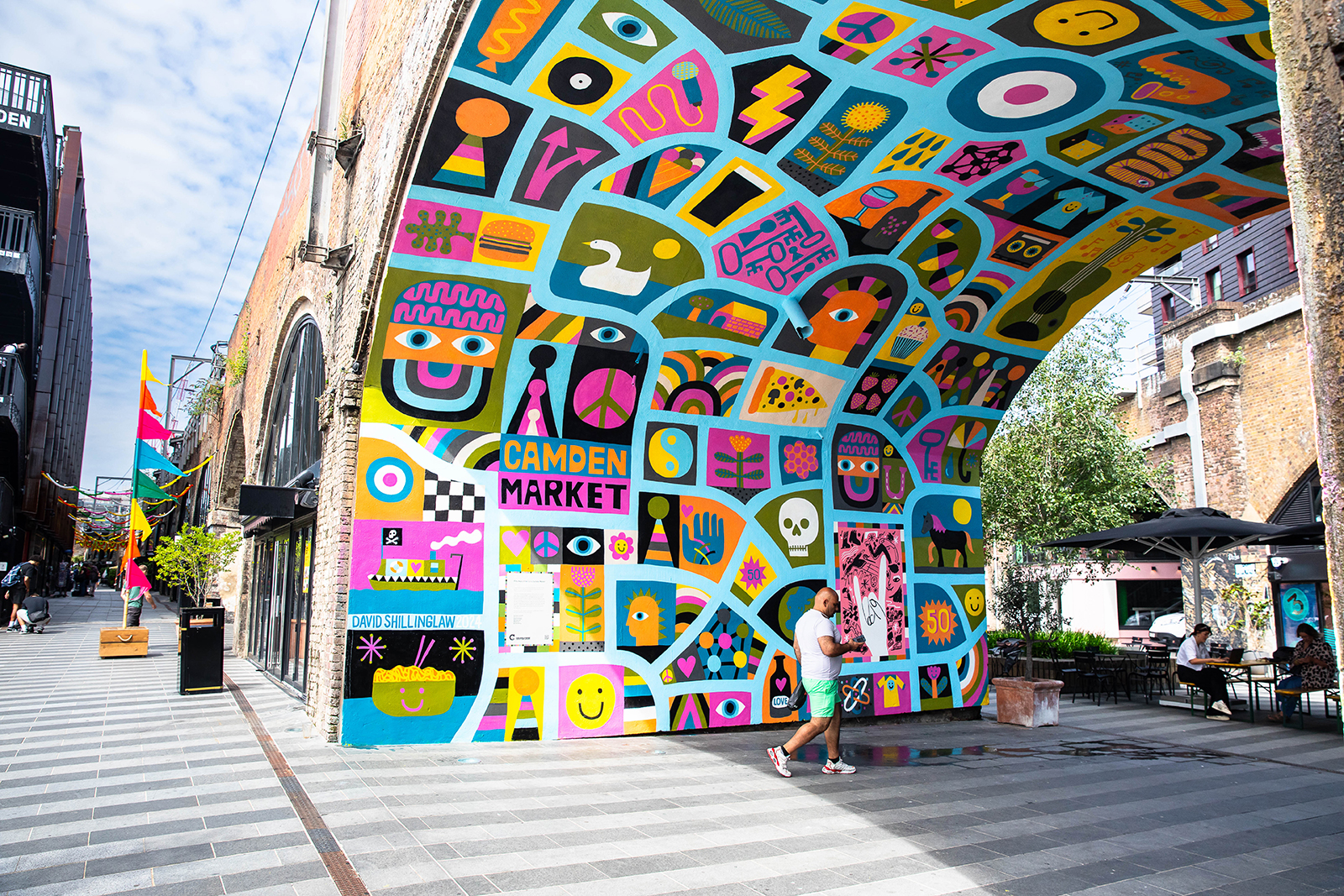
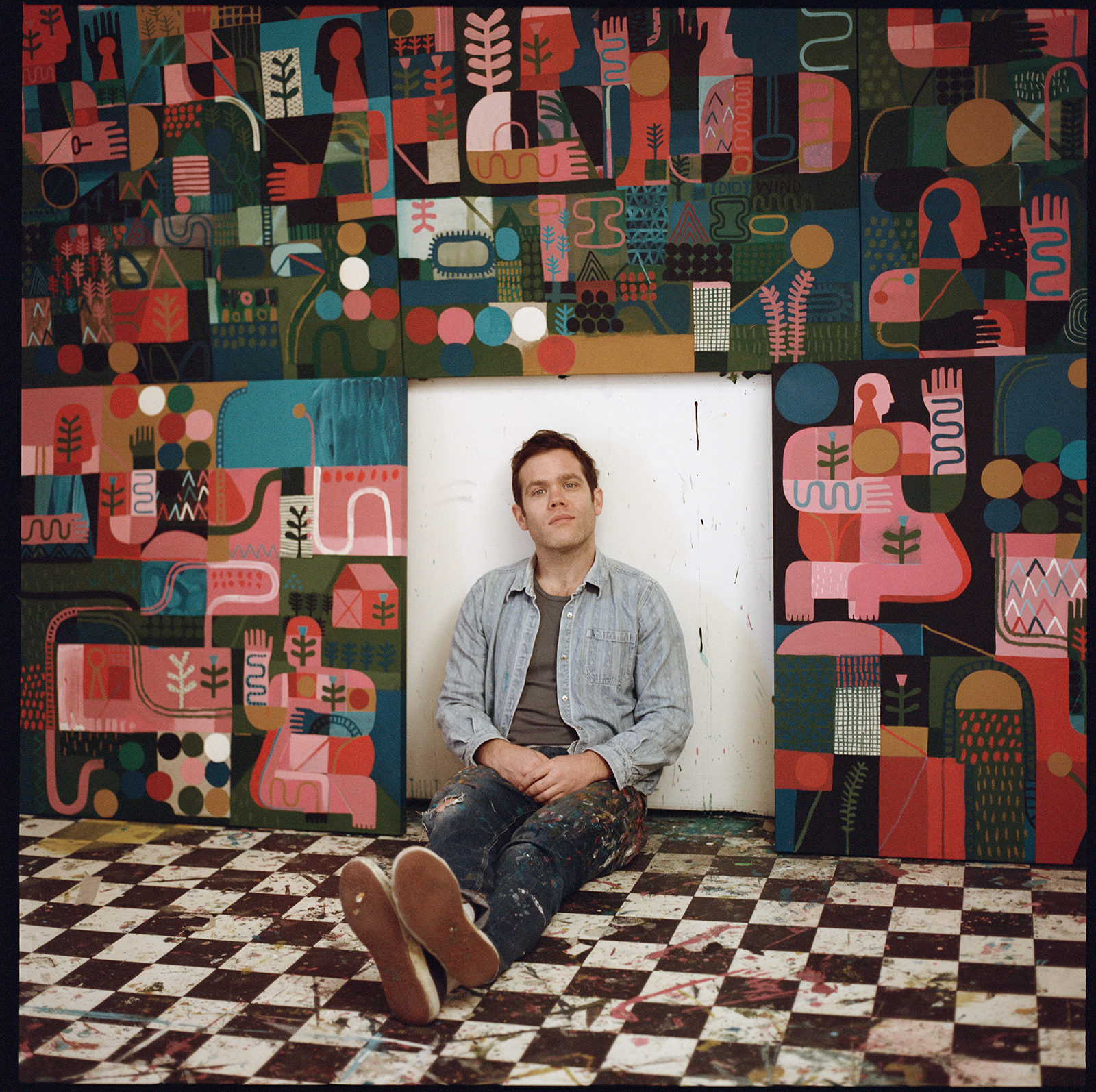 David Shillinglaw / Photo by Joanna Dudderidge
David Shillinglaw / Photo by Joanna Dudderidge
